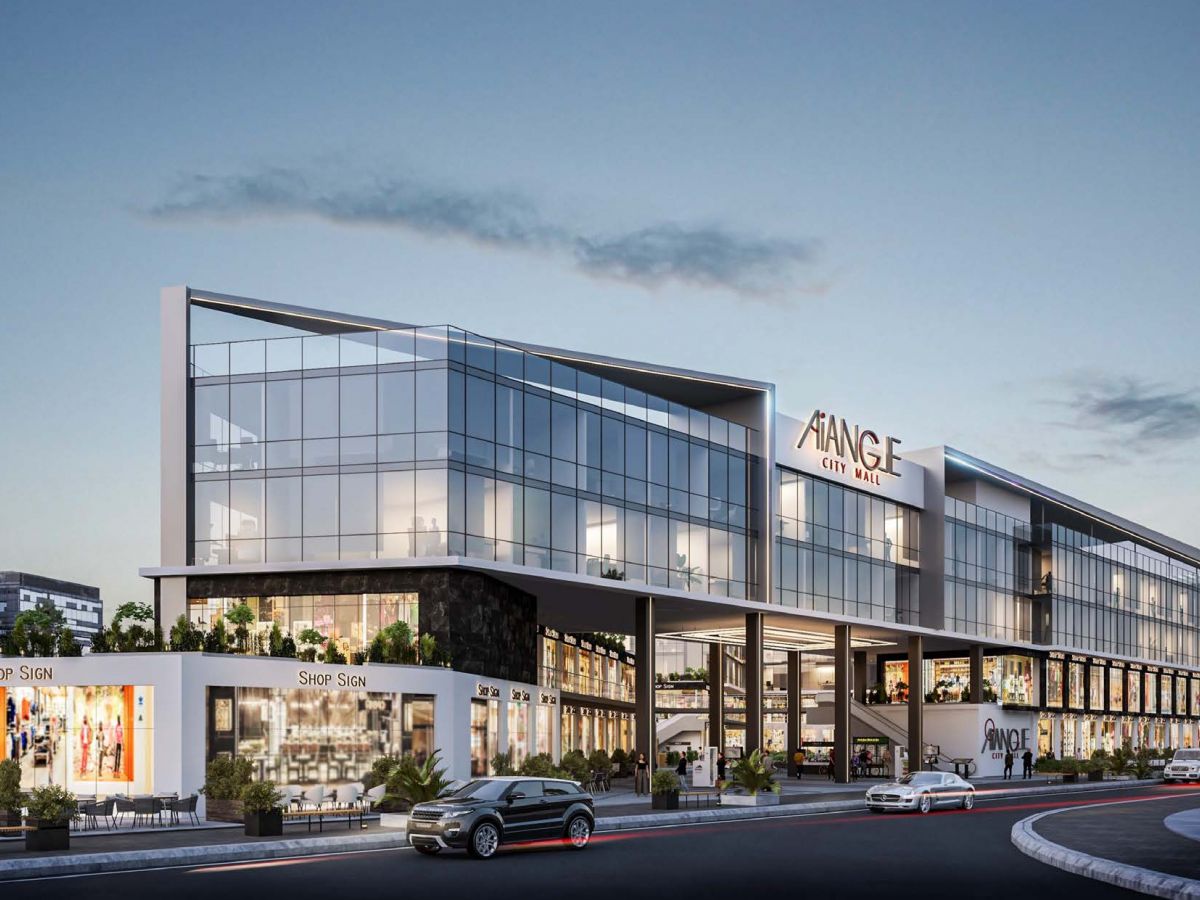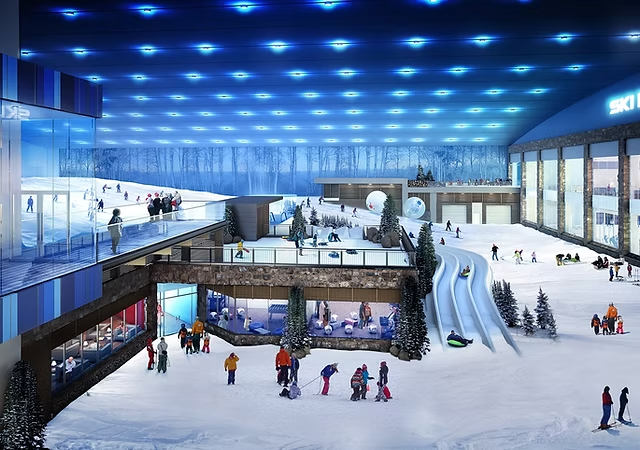Are you curious about Mall of Egypt calculations?
The Mall of Egypt — Majid Al Futtaim’s flagship destination in 6th of October City — transformed west Cairo’s retail landscape when it opened in 2017. With large anchors, entertainment draws (including Ski Egypt and VOX Cinemas) and a gross leasable area measured in the hundreds of thousands of square meters, it functions as both a shopping center and a regional magnet for spending and leisure. That “destination” quality is the single biggest variable for investors thinking about retail units in its immediate surroundings: location and footfall drive rents, tenant demand and ultimately returns.
This article explains the main drivers of return, typical yield expectations in the Egyptian market, practical ways to model ROI for a single unit, the risks that materially affect returns near Mall of Egypt, and practical tactics investors should consider.
Table of Contents
ToggleWhat actually generates ROI for a retail unit here?
Three revenue levers determine the numerator of any ROI calculation for a retail property:
-
Rent (or sales if you operate the store yourself),
-
Ancillary income (parking, advertising, service charges passed to tenants), and
-
Capital appreciation when you sell.
Around Mall of Egypt, the mall operator’s ability to maintain very high occupancy and to draw non-local visitors pushes both achievable rents and the resale value of nearby retail real estate. The presence of anchor tenants and entertainment venues creates spillover demand that strengthens the positioning of adjacent commercial properties.
On the cost side, factor in acquisition and fit-out costs, ongoing operating expenses, taxes, service charges, and inflation-linked local costs (labour, utilities). In Egypt, macroeconomic factors — currency movements, inflation, and government policy — often dominate the net cashflow profile and the discount rate applied by buyers.
Market context and what yields look like
Recent market commentary indicates that commercial yields in Egypt can be attractive compared with some regional peers. Commercial rental yields are often quoted in a range of roughly 10%–14%, though results vary a lot by location, tenant covenant, and lease structure. These headline yields are useful for back-of-envelope ROI thinking but must be tested at the unit level.
More broadly, Cairo’s retail market has been growing in both stock and rents. Over the past few years, prime retail rents have shown resilience even during macroeconomic volatility, while secondary assets face more pressure. In practice, that means rents around high-traffic malls like Mall of Egypt have room to re-price upward if demand holds.
A simple ROI model (worked example)
Use this as a template — plug in your numbers:
-
Estimate annual net rent (after vacancy and operating expenses).
-
Estimate capital growth (annual % appreciation).
-
Compute total return = net rental yield + capital growth.
-
ROI (simple) = (Annual net cashflow + annualised capital gain) ÷ Equity invested.
Example: suppose you buy a small retail shell (100 sqm) that achieves an annual net rental income of EGP 120,000 (EGP 1,000 per sqm per month net), and you expect capital appreciation of 6% per year.
-
Net rental yield = 120,000 ÷ 1,200,000 = 10%.
-
Add 6% appreciation → total expected return ≈ 16% per year (before taxes, financing costs, and vacancy adjustments).
This demonstrates why headline yields of 10–14% reported for commercial properties in Egypt can convert into attractive total returns when combined with local price appreciation and active asset management.
Key risks that change ROI near Mall of Egypt
-
Supply growth and competition. West Cairo has seen a surge in retail and mixed-use stock since Mall of Egypt opened; new inventory can cap rent growth and push yields higher (which lowers valuations).
-
Macro & currency risk. Egypt’s inflation and exchange rate dynamics can erode real returns or increase local operating costs. Investors using foreign currency financing or repatriating profits are particularly exposed to exchange-rate volatility.
-
Tenant risk. Dependence on international or regional retailers exposes landlords to brand-specific performance. If large anchors face challenges, it can ripple through smaller tenants.
-
Operational risk. Poor fit-out, mismanagement, or inadequate marketing of a retail strip near the mall can leave units underperforming despite high footfall.
-
Regulatory environment. Changes in taxation, commercial property regulation, or zoning can materially alter ROI calculations.
Tactics to improve ROI
-
Target necessity retail. While luxury and fashion tenants are cyclical, units catering to daily needs (F&B, pharmacies, services) often show more consistent demand.
-
Leverage mixed-use integration. Many developments around Mall of Egypt combine residential, office, and retail. Owning a retail unit that benefits from both mall-driven traffic and a captive residential base helps smooth revenue.
-
Negotiate flexible leases. Blend fixed rent with turnover-based components to align with tenant performance.
-
Consider currency hedges. For foreign investors, managing FX exposure is central to preserving returns.
-
Invest in quality fit-out. Units with turnkey designs command higher rents and face lower vacancy risk.
Long-term outlook
The catchment of Mall of Egypt is expanding as 6th of October City and Sheikh Zayed continue to attract residential and commercial investment. Infrastructure improvements — road networks, public transport, and nearby developments — further increase accessibility and long-term viability. In the medium to long term, well-positioned retail units in this area should benefit from sustained urban expansion, tourism activity, and the anchor effect of the mall itself.
Conclusion
ROI from retail units around Mall of Egypt is driven by the mall’s gravitational pull, Egypt’s relatively high commercial yields, and ongoing urban expansion in west Cairo. Investors can realistically model double-digit annual returns when combining net rental yields with capital appreciation, provided they actively manage risks around supply growth, macro volatility, and tenant health. The opportunity is compelling, but the margin between a high-performing unit and an underperforming one is narrow — careful due diligence, lease structuring, and strategic positioning make all the difference.
Frequently Asked Questions
Why are retail units around Mall of Egypt considered a good investment?
Mall of Egypt is not just a shopping centre; it is a regional destination that combines luxury retail, entertainment anchors like Ski Egypt, and high-profile international brands. This creates a powerful magnet for footfall that spills over into the surrounding area. Retail units near such a hub benefit from:
-
High pedestrian traffic generated by visitors.
-
Tenant demand from brands wanting to capitalize on proximity without paying prime mall rents.
-
Strong resale value, as commercial investors typically place a premium on assets located adjacent to destination malls.
Additionally, the 6th of October and Sheikh Zayed areas are rapidly urbanizing, meaning the catchment population — and spending power — is expanding year after year.
What are the typical rental yields for retail units in Egypt, and how does this compare internationally?
Commercial retail yields in Egypt often fall in the 10%–14% range, depending on location, tenant profile, and lease structure. This is considered high compared to many developed markets (e.g., Europe or the Gulf), where commercial yields often average between 4%–7%. For investors, Egypt’s relatively high yields indicate greater income potential, though this comes with higher risk due to macroeconomic volatility, inflation, and currency depreciation. Around Mall of Egypt, yields are typically on the stronger side of the national average because of the mall’s ability to anchor demand and maintain consistent footfall.
What risks could reduce returns for investors?
Several risks must be considered:
-
Oversupply: New malls and mixed-use projects in West Cairo may cap rent growth.
-
Macroeconomic risk: High inflation and exchange rate volatility can reduce real returns.
-
Tenant risk: If major brands or anchors underperform, surrounding smaller units may suffer.
-
Vacancy risk: Units without the right tenant mix may remain unleased despite high area traffic.
-
Regulatory changes: New taxes, property laws, or zoning changes could affect profitability.
Active management, careful tenant selection, and diversification are ways to mitigate these risks.
How does Mall of Egypt’s presence affect capital appreciation of nearby retail properties?
Mall of Egypt is a long-term anchor that boosts land and property values in its catchment. Its presence improves infrastructure, attracts residential developments, and creates a commercial ecosystem. For retail unit owners, this translates into:
-
Price resilience: Assets nearby hold value even during economic downturns.
-
Premium over comparable areas: Units near major malls trade at higher multiples than similar properties further away.
-
Faster liquidity: Investors and tenants alike actively seek space near proven retail hubs, which supports resale potential.
